Maximizing garage space can significantly improve organization and functionality in your home. Garages often serve multiple purposes, from storing vehicles and tools to housing seasonal items and hobbies. Without an efficient system, the space can quickly become cluttered and chaotic.
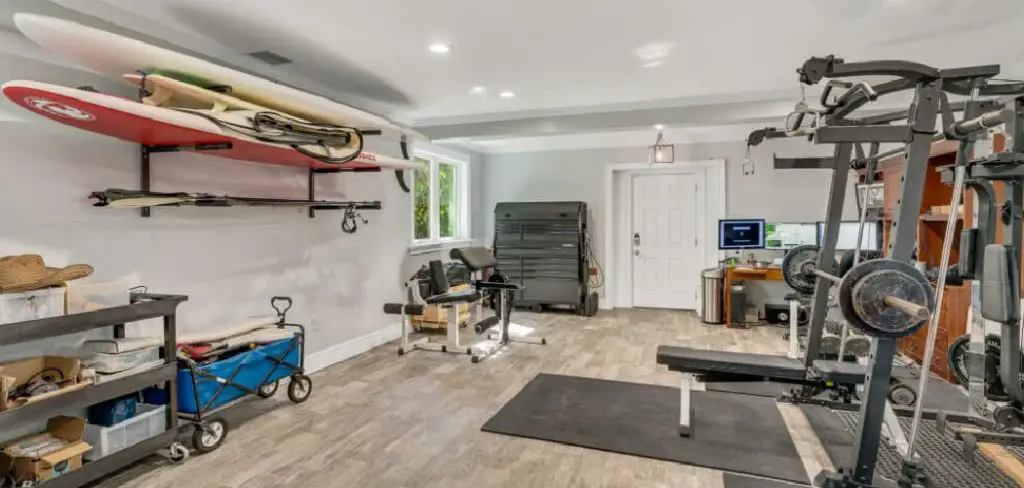
By implementing smart storage solutions and creative layouts, you can make the most of every square foot and turn your garage into a well-organized, multi-functional area. Thanks for reading this article on how to maximize garage space.
Why Storage Matters?
Proper storage is essential for maintaining an organized and stress-free environment in your home. A cluttered space not only reduces functionality but can also contribute to feelings of being overwhelmed or distracted. By prioritizing storage solutions, you can create a sense of order and easily access the items you need when you need them.
Additionally, effective storage helps protect your belongings from damage, ensuring tools, seasonal decorations, and other items remain in good condition over time. Investing in quality storage systems is not just about tidiness—it’s about improving the overall efficiency and usability of your space.
Needed Materials
- Shelving Units
- Storage Bins
- Hooks and Pegboards
- Labels and Markers
- Drawer Organizers
- Hangers
12 Step-by-Step Guidelines on How to Maximize Garage Space
Step 1: Assess Your Needs
Start by evaluating what you want to achieve with your garage space. Take inventory of all the items currently stored in your garage and sort them into categories such as tools, sports equipment, seasonal decorations, and miscellaneous items. Identify which items you use frequently and which ones you rarely need or no longer use.
This step will help you determine what should stay, what can be donated or discarded, and how much storage space you’ll need for the remaining items. Understanding your specific needs is crucial to creating a functional and organized space.
Step 2: Measure Your Space
Accurately measuring your garage is an essential step in creating an organized and efficient storage system. Start by determining the total square footage of the space, taking into account the height, width, and depth of your garage. Be sure to measure all nooks, corners, and any irregular areas, as these can often be used for additional storage.
Don’t forget to account for immovable structures such as support beams, windows, doors, or utility panels when mapping out the available area. Having precise measurements will help you plan for shelving, cabinets, or other storage solutions that fit seamlessly into your garage and make the most of the space.
Step 3: Install Shelving Units
Once you have your measurements, it’s time to install shelving units to maximize your storage capacity. Shelving is a versatile solution that keeps items off the floor and easily accessible. Choose sturdy, adjustable shelves that can accommodate a variety of items, from tools and paint cans to seasonal decorations.
If your garage walls are finished, consider wall-mounted shelves to save floor space, but if the walls are unfinished, freestanding units can work equally well. Be sure to anchor heavy shelves securely to prevent tipping and ensure they can hold substantial weight. Properly installed shelving not only organizes your garage but also creates a clean and clutter-free environment.
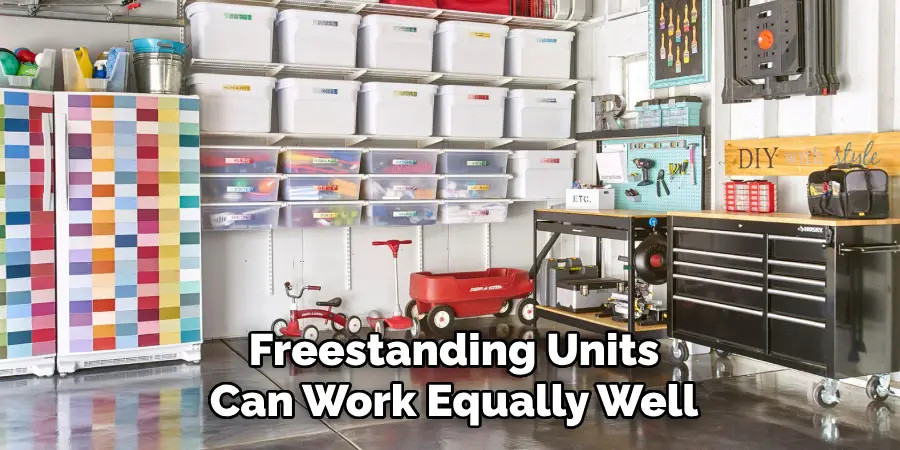
Step 4: Utilize Wall Space
Maximizing the use of wall space is essential for an efficient garage organization system. Consider installing hooks, pegboards, or rail systems to store tools, sports equipment, and other frequently used items. These solutions keep your belongings easily accessible while freeing up floor space.
Magnetic strips can also be used to hold smaller metal tools securely. For larger items, such as ladders or bikes, wall-mounted racks are an excellent option. By taking advantage of vertical space, you can significantly increase storage capacity and keep the garage neat and orderly.
Step 5: Utilize Ceiling Space
Ceiling storage is an often-overlooked solution for maximizing space in your garage. Install overhead storage racks to store seasonal items, holiday decorations, or other infrequently used belongings.
This method keeps items out of the way while preserving valuable floor and wall space. You can also use ceiling hooks to hang bulky items like kayaks, extension cords, or even folding chairs. When utilizing ceiling space, ensure that racks and hooks are securely installed and that the weight limits are not exceeded to maintain safety and effectiveness.
Step 6: Sort and Declutter
Begin by categorizing all the items in your garage into groups such as tools, sports equipment, gardening supplies, and seasonal decorations. Once sorted, assess each group and decide what to keep, donate, recycle, or discard.
Be honest about what you truly need and use—holding onto unnecessary items only creates clutter. Decluttering not only creates more space but also helps you identify items that may require better storage solutions. Try to tackle one section at a time to make the process manageable and stay focused.
Step 7: Utilize Wall Space
Make the most of your garage by taking advantage of vertical storage options. Installing shelves, wall-mounted racks, or pegboards can help you organize tools, equipment, and other items while keeping the floor space clear. Use hooks for hanging bicycles, ladders, or garden tools, and label the storage areas for easy identification.
This approach not only maximizes your storage capacity but also ensures that frequently used items are easily accessible. Organizing your garage walls efficiently creates a cleaner and more functional space.
Step 8: Use Clear Containers
Clear containers are an excellent choice for keeping your garage organized and clutter-free. They allow you to quickly see the contents without the need to open each box, saving time and effort. Use clear, stackable bins to store smaller items such as seasonal decorations, sports gear, or craft supplies.
For added organization, label each container with specific categories or contents to keep everything in its place. This system not only enhances visibility but also ensures that finding and storing items becomes a hassle-free process.
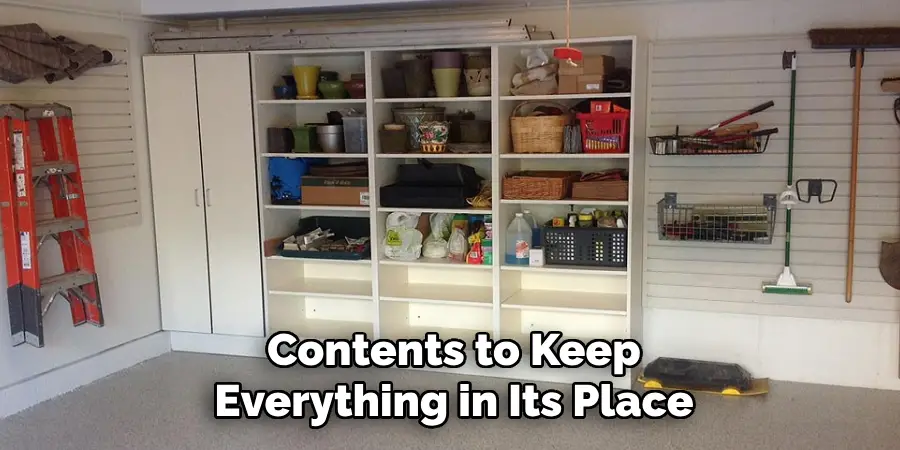
Step 9: Label Everything
Labeling is a crucial step to maintain order and accessibility in your storage system. Use durable, easy-to-read labels that clearly identify the contents of each bin, box, or container. Whether you choose pre-made labels, a label maker, or simple handwritten tags, ensure they are specific and consistent.
For example, instead of writing “Miscellaneous,” label a bin as “Holiday Lights” or “Camping Gear.” Color-coded labels can also be helpful for easily identifying categories at a glance. By labeling everything, you’ll save time searching for items and keep your space efficiently organized.
Step 10: Keep Like Items Together
Grouping similar items is a key strategy for maintaining organization and making your space more efficient. Store items that serve a similar purpose or belong to the same category in one designated area. For instance, keep all office supplies such as pens, notebooks, and staplers in a single drawer or bin, while craft materials like paints, brushes, and scissors can be consolidated together.
This approach not only helps you locate items quickly but also prevents duplicates or misplaced belongings. By keeping like items together, you’ll create a logical and cohesive system that is easy to maintain in the long term.
Step 11: Utilize Wall Space
Maximizing vertical space is an effective way to enhance organization and save room in your home or office. Install shelves, pegboards, or wall-mounted organizers to keep items off desks and floors while maintaining easy accessibility. Use labeled bins or hooks on these systems to store tools, accessories, or decorations.
By utilizing wall space creatively, you not only reduce clutter but also add a functional and aesthetic element to your space. This strategy is particularly useful in smaller areas where every inch matters.
Step 12: Purge Regularly
To maintain an organized and clutter-free space, it’s essential to purge regularly. Set aside time every month or season to evaluate your belongings and identify items you no longer need or use. Donate, recycle, or discard these items responsibly to avoid unnecessary accumulation. Regular purging not only frees up valuable space but also helps you stay mindful about what you bring into your home or office, fostering a habit of intentionality and simplicity.
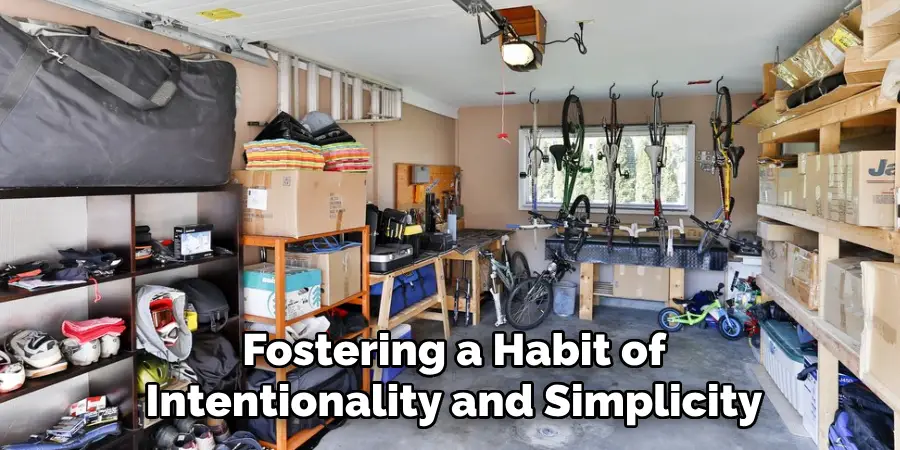
Following these steps on how to maximize garage space, you can also apply them to other areas of your home or office. By implementing these strategies, you can create a more organized and spacious environment that allows for greater productivity and peace of mind.
Frequently Asked Questions
Q1: How Often Should I Declutter My Garage?
A: It is recommended to declutter your garage at least once a year, or more frequently if needed. Regular purging helps prevent clutter from building up and taking over valuable space.
Q2: Can I Use the Same Tactics for Other Areas of My Home or Office?
A: Yes, the strategies mentioned in this guide can be applied to any area that needs organizing and maximizing space. Whether it’s a closet, desk, or storage room, these tips can help you create a more functional and clutter-free environment.
Q3: Is There an Ideal Time to Declutter My Garage?
A: There is no specific best time to declutter your garage, as it ultimately depends on your personal schedule and availability. However, it may be helpful to choose a time when you have a few hours or even a whole day set aside to focus solely on decluttering and organizing the space. This will allow you to make significant progress without feeling rushed or overwhelmed.
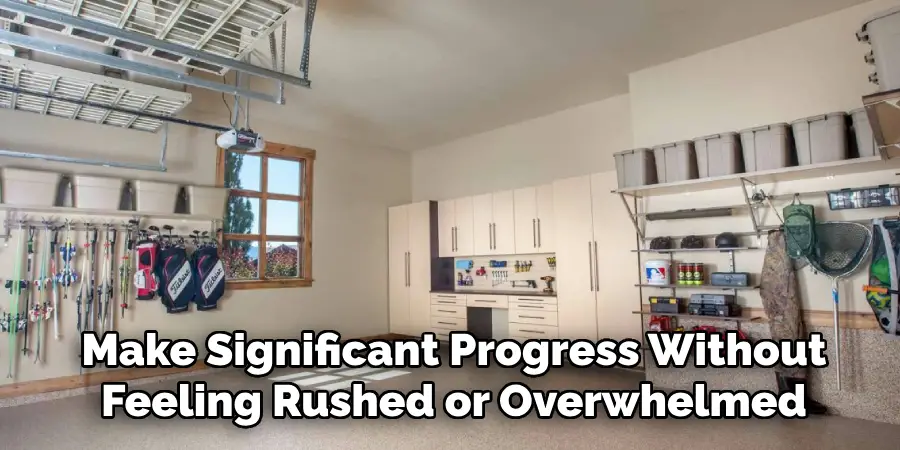
Conclusion
Maximizing space in your garage—or any area—requires a thoughtful and strategic approach. By decluttering, organizing, and utilizing smart storage solutions, you can transform even the most chaotic spaces into functional and efficient environments. The key lies in maintaining a consistent effort to keep things tidy and being intentional about what you choose to store.
With these practices, you can enjoy a more organized, stress-free space that better supports your daily life and long-term goals. Thanks for reading this article on how to maximize garage space.

